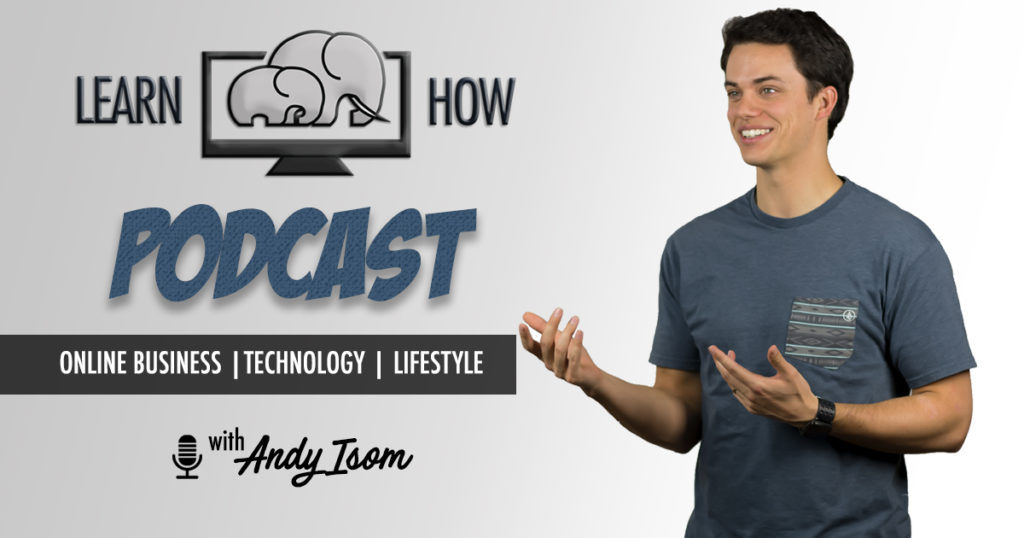How to Find Profitable Business Ideas for Beginners
In this article, you'll learn the 4 Steps that you need to go through to find profitable business ideas.
Building a business can be full of surprises. There are many unexpected costs and challenges. For many of us, the goal is to start a business for the lowest cost possible. If you use the 4 steps in this article, you'll find it much easier to validate your business ideas, and be certain that you can profit from your ideas.
The 4 steps to finding a profitable business idea are:
- How to price your product
- Determining your place on the value ladder
- Cost of production
- Cost of acquisition
Before we get started, grab our free report we've put together with the “Top 3 Tools” help you turn your ideas into a successful online business:
The best business ideas
The best business ideas are the ones that are profitable. An idea [or business] is profitable when revenue is greater than expenses. Revenue = sales. Expenses = costs.
The secret to finding the BEST business idea is not in the actual idea…
More importantly, the secret is if you can make the idea profitable. You could come up with the craziest state-of-the-art device that solves world hunger and cures cancer, but if you can't find a profitable way to create and sell your product, it's not a good business idea.
I'm going to show you how the 4 steps in this article will change the way you think about your business ideas.
How to find the perfect idea
A lot of people struggle to come up with the “perfect” business idea. They have the desire to start a business, but they are in a blank state of mind because they can't come up with that perfect idea!
If you're blindly searching for the perfect business idea you're going to have a hard time finding one…
Instead of searching for ideas try searching for problems and pains. Most good business ideas focus on solving a problem or pain of their potential customer. People are usually willing to spend money to make pain go away quickly and easily. If you change your mindset to focus on solving problems and pains, you'll find it MUCH easier to come up with good profitable ideas.

If you need some in-depth help with this topic, I've put together a podcast episode called, “The 5 Things People Are Willing to Spend Money On.” This episode focuses on the type of things people spend money on, what drives people to buy, emotions that affect buyers decisions, and all the good stuff like that. It's a great episode to help you brainstorm potential ideas.
Now let's get to the 4 Steps that will help you come up with profitable business ideas. Like mentioned earlier, these 4 steps will help you validate your ideas so you don't get surprised down the road by unexpected costs and challenges.
1. How to price your product
I like to establish pricing your product idea first because it affects so many other things you'll do later on with your business. I wish I would have learned this method a lot sooner in my career with online business, because it can drastically halt your progress, and you can waste A LOT of time developing a business idea only to learn that it's not going to be profitable.
Let me give you a personal example…
With my website learnhowgroup.com I wanted to create a course to help people learn how to use iCloud. It sounded like a great idea to me because I had gotten a lot of feedback from my audience saying that they needed help with iCloud.
I immediately got started creating The Ultimate iCloud Course which at the time had 12 modules, tons of video, written tutorials, and all the goodies. I spent weeks working on it and then had an epiphany, “Are people going to actually pay for this? How much will they pay?”
As I stopped to ponder this I found myself asking more questions, “How will I find potential customers? How much will it cost to advertise this? What will my profit margins be?”
All the questions I should've asked BEFORE I started making the course were coming up now that I had already spent quite a substantial amount of time creating the product. I'm going to address some of the questions I asked myself in this article, but the main problem here was that I had a low priced product that I couldn't sell profitably.
This leads me to the key point about pricing your product [or business idea] – Sell high priced items.
Trust me on that one… A wise online businessman once told me, “It essentially takes the same amount of time, energy, and effort to create and sell a $5 product as it does a $500 product, so why not sell the higher priced product?”
If you are a very well established business looking for new ideas or products, you can probably afford to sell some low price products. Or if you have a massive audience or a lot of money to invest up front, you can probably find success selling low price items. But if you're just getting started, focus on high priced products!
That leads me to step 2…
2. Determining your place on the value ladder
I like to imagine the value ladder more like a value stair case. There are different steps or levels of value for a specific business or product idea. You need to decide where you are going to fit on the value ladder.
I like to use cars for this example…
A Kia and a Rolls-Royce are both “cars”. They have 4 wheels, seats, engine, doors, and people sit in them and drive from A to B. Now the value and experience they provide are completely different. That's the reason why you can get a used Kia for a couple thousand dollars, but a Rolls-Royce will cost you anywhere from $300,000 to $12.8 Million.

The Kia would be at the lower end of the value ladder and the Rolls-Royce would be at the higher end of the value ladder.
When coming up with business ideas, I highly suggest positioning towards the top of the value ladder.
Here's why…
Like I said, it will take you essentially the same amount of time, energy, and effort to build an online business selling a $5 product as it will selling a $500 product. But two very important lessons I learned from successful mentors are:
- Low priced products (cheap) attract low quality customers.
- It's better to win a value war than a price war.
Cheap products usually tend to attract “cheap” customers. I'm not saying all customers who like to look for a bargain are bad people… Not at all. But you'll quickly learn that customers who buy cheap stuff sometimes don't value it, take care of it, talk about how great it is, or share it with their friends.
What you'll commonly see from these types of customers are: returns, complaining, leaving bad reviews if it sucks (but not usually leaving good reviews if it's great), and that type of behavior.
On the other hand, high quality customers usually give constructive feedback, value your products, talk about the product, and are just a lot more pleasant to work with. Now that's not ALWAYS accurate. But speaking for the entire market, that's what I've seen and what many of my peers have seen in business.
A value war would be when you are competing with another business to create the BEST product on the market, or to provide the MOST value to your customers. This is a war you want to focus on and try to win. Even if your product isn't #1… a top 5 product is a much better business idea than a bottom 5 or cheapest product.
If you think that you're going to enter the market as the “low cost leader”, you'll quickly find yourself entering a price war. This is when you and your competitors constantly lower their prices to be THE lowest price on the market. This is a downward spiral that is hard to escape and quickly leads to failure.
Think about business ideas to position yourself at the higher end of the value ladder to be the BEST product on the market – even if that means it's the most expensive!
3. Cost of Production
Steps 1 & 2 are to help you focus on high priced high value business ideas. Steps 3 & 4 will show you why that is so important when you're trying to find a profitable business idea.
You need to seriously think about the cost of production for your business ideas. The biggest mistake you can make when starting a business, is going in not knowing how much it's going to cost you. There are a lot of surprise costs that will show up on your bank statements if you aren't aware of what to expect.
The cost of production for our purposes will refer to the cost of building your business. This could include manufacturing costs, shipping costs, legal fees, website costs, tools & plugins you need, or any other “fixed” costs.

It will serve you well to figure out these costs before you start – and more importantly if you're still in the idea phase – just be aware of the types of costs that come with different business ideas. Physical product ideas will definitely have manufacturing and shipping costs. Information products online might not have a “manufacturing” cost, but maybe there is a programming cost, or labor cost.
If you don't want to deal with manufacturing or shipping costs, don't even consider business ideas that feature a physical product.
The overall cost of production also ties into your pricing and value. Containers from China (if you manufacture overseas) essentially charge a flat fee for the entire container. Whether you fill that up with dirt or gold bricks is up to you, but it will essentially cost the same. That's why high priced products will make it a lot easier to profit.
4. Cost of Acquisition
The final step is to determine the cost to acquire a new customer.
As a new online business, it can be very difficult to drive traffic to your website organically. It takes time, consistency, and great content to rank high in Google's search algorithm. If you're looking for a faster way to sell your product, you'll probably need to consider paid advertising.

If you decide to use Facebook or Google advertising you're going to want to understand these metrics:
- CPC – Cost Per Click
- CPM – Cost Per Thousand Impressions
- CTR – Click Thru Rate
- Conversion Rate
It's pretty easy to do research on Google to find average cost per clicks for your given industry for Facebook and Google advertising. When you can figure out CPC, you can begin to research standard conversion rates for your industry.
Let's pretend you want to sell a fitness related product and you are going to use Facebook advertising to acquire new customers. This article from WordStream shows some standard benchmarks for CPC's on Facebook for a variety of industries. For fitness the CPC is $1.80 on average.
To get 100 people to click through to your website will cost around $180. Conversion rates for fitness ads according to the report are around 14%. That means that about 14 in every 100 people will convert, whether thats joining your email list or potentially buying your product. It would cost you about 180/14 = $12.85 to get a new customer in this example.
There are a lot of factors that affect CPC's and Conversion rates, but you can see that doing a little industry and competitor research will help you understand how much it may cost to find new customers. If you're selling a $10 product and it costs you $12.85 to get a new customer, that's not a profitable business model (in the short term).
Top 3 Tools to build your online business
Starting an online business doesn't have to be expensive.
I know what it's like to start an online business on a budget, and I recommend starting with what you can afford.
I've done a lot of research, and put together a free report that shows you the best 3 tools that you can use to build your online business. Hint…One of them is free! Click the button to get it sent to you instantly.



